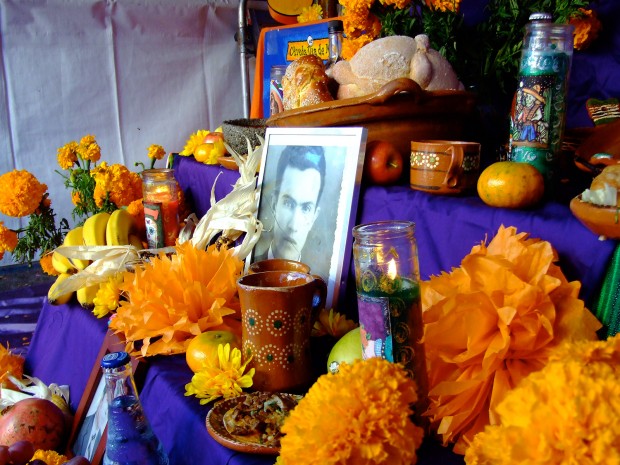Day of the Dead is a holiday widely practiced in Mexico. Families come together to honor dead loved ones and encourage their sprits to visit with various gifts. Evidence of ceremonial rituals meant to attract the spirits of the dead and honor them can be traced back to Pre-Colombian times. Aztecs dedicated a month long festival starting around August to the goddess Micteozcihuatl, the precursor to today’s Catrina. Over time beliefs of the indigenous peoples combined with Catholic beliefs, producing a three day celebration that starts on October 31st and lasts until November 2nd. Each day holds specific significance. On the first night, called Dia de los Inocentes (Day of the Innocents) children make altars for the angelitos (spirits of young children or babies) encouraging them to visit. The next day called All Saints Day honors adult spirits and on the last day, All Sous Day, families gather in cemeteries to decorate the graves of relatives and friends who have passed. The traditions of this festival spread through out the region and now similar holidays for the dead are practiced in Spain, Brazil, and some areas of Europe, Asia, Africa and America.
There are specific icons that make up the visual lexicon of Dia de los Muertos. The most readily recognized being sugar skulls (calaveras de azúca) placed onto graves as oferenda (offerings). These decorations made of sugar and can be bought, but are often homemade. The sugar is shaped into a skull and brightly decorated with patterns in multi-colored icing, shiny foil, sequins and glitter. These are not morbid items, but are cheerful reminders to the dead of the love their living relatives still have for them. Marigolds are the flowers of the dead and are thought to attract spirits. The flowers and sugar skulls populate art inspired by Dia de los Muertos themes. Faimlies also paint their faces in a likeness of the sugar skulls and wear marigolds in their hair.
Altars made for the dead can become large and complex, filled with sugar skull, paper decorations, food and drink favored by the deceased, candles, flowers, toys and pictures. These altars are made to attract the spirits during the days of the holiday when they can visit. Special bread is baked called pan de muertos (bread of the dead) and also placed on graves. These elaborate alters are quite beautiful and reenforce the celebratory themes of the holiday. Below I have attached some pictures of altars and other items from Dia de los Muertos. Later this week, my work place will participate with Dia de los Muertos by having private and public altars for the community to visit. I am very proud to be able to contribute to this long tradition as well as excited to be a part of it. I will try to take some good pictures of the altars to share later this week or early next week.
Thanks for reading guys, and whether you chose to celebrate Halloween or Dia de los Muertos or both, I wish you all the best.











